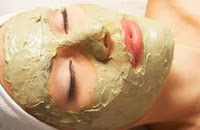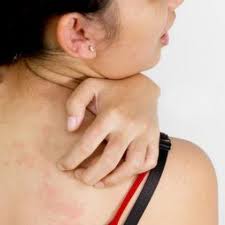Tattoos might be more common than ever, but don't take tattooing lightly. Know the risks and understand basic safety precautions and aftercare steps.
You could be the proud owner of a new tattoo in a matter of hours — but don't let the ease of getting tattoos stop you from making a thoughtful decision about permanent body art. Before you get a tattoo, make sure you know what's involved. Also, be certain that tattooing is the right decision for you.
How tattoos are done
A tattoo is a permanent mark or design made on your skin with pigments inserted through pricks into the skin's top layer. Typically, the tattoo artist uses a hand-held machine that acts much like a sewing machine, with one or more needles piercing the skin repeatedly. With every puncture, the needles insert tiny ink droplets. The process — which is done without anesthetics — causes a small amount of bleeding and slight to potentially significant pain.
Know the risks
Tattoos breach the skin, which means that skin infections and other complications are possible. Specific risks include:
Allergic reactions. Tattoo dyes — especially red, green, yellow and blue dyes — can cause allergic skin reactions, such as an itchy rash at the tattoo site. This can occur even years after you get the tattoo.
Skin infections. A skin infection — which might cause redness, swelling, pain and a pus-like drainage — is possible after tattooing.
Other skin problems. Sometimes bumps called granulomas form around tattoo ink. Tattooing can also lead to keloids — raised areas caused by an overgrowth of scar tissue.
Bloodborne diseases. If the equipment used to create your tattoo is contaminated with infected blood, you can contract various bloodborne diseases — including tetanus, hepatitis B and hepatitis C.
MRI complications. Rarely, tattoos or permanent makeup might cause swelling or burning in the affected areas during magnetic resonance imaging (MRI) exams. In some cases, tattoo pigments can interfere with the quality of the image — such as when a person who has permanent eyeliner has an MRI of the eye.
Medication or other treatment — including possible removal of the tattoo — might be needed if you experience an allergic reaction to the tattoo ink or you develop an infection or other skin problem near a tattoo.
Make sure you're ready
Before you get a tattoo, ask yourself whether you truly want to invest in permanent body art. If you're unsure or worried that you might regret it someday, give yourself more time to think about it. Don't allow yourself to be pressured into getting a tattoo, and don't get a tattoo if you're under the influence of alcohol or drugs.
If you decide to go ahead with the tattoo, choose the location of the tattoo carefully. Consider whether you want the tattoo to be visible or hidden under clothing. Also remember that weight gain — including pregnancy weight gain — might distort the tattoo or otherwise affect its appearance.
Insist on safety precautions
To make sure your tattoo will be applied safely, answer these questions:
Who does the tattooing? Don't attempt to tattoo yourself or allow an untrained friend to do the tattooing. Go to a reputable tattooing studio that employs only properly trained employees. Keep in mind that regulation requirements and licensing standards vary from state to state. Check with your city, county or state health department for information on local licensing and regulations.
Does the tattoo artist wear gloves? Make sure the tattoo artist washes his or her hands and wears a fresh pair of protective gloves for each procedure.
Does the tattoo artist use proper equipment? Make sure the tattoo artist removes the needle and tubes from sealed packages before your procedure begins. Any pigments, trays or containers should be unused as well.
Does the tattoo artist sterilize nondisposable equipment? Make sure the tattoo artist uses a heat sterilization machine (autoclave) to sterilize all nondisposable equipment between customers. Instruments and supplies that can't be sterilized with an autoclave — including drawer handles, tables and sinks — should be disinfected with a commercial disinfectant or bleach solution after each use.
Take good care of your tattoo
How you care for your new tattoo depends on the type and extent of work done. Typically, however, you'll need to:
Remove the bandage after 24 hours. Apply an antibiotic ointment to the tattooed skin while it's healing.
Keep the tattooed skin clean. Use plain soap and water and a gentle touch. While showering, avoid direct streams of water on the newly tattooed skin. Pat — don't rub — the area dry.
Use moisturizer. Apply a mild moisturizer to the tattooed skin several times a day.
Avoid sun exposure. Keep the tattooed area out of the sun for at least a few weeks.
Avoid swimming. Stay out of pools, hot tubs, rivers, lakes and other bodies of water while your piercing is healing.
Choose clothing carefully. Don't wear anything that might stick to the tattoo.
Allow up to 2 weeks for healing. Don't pick at any scabs, which increases the risk of infection and can damage the design and cause scarring.
If you think your tattoo might be infected or you're concerned that your tattoo isn't healing properly, contact your doctor. If you're interested in tattoo removal, ask your dermatologist about laser surgery or other options for tattoo removal.
Related Topics :

























